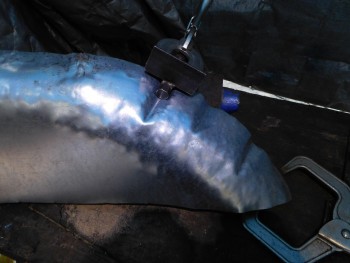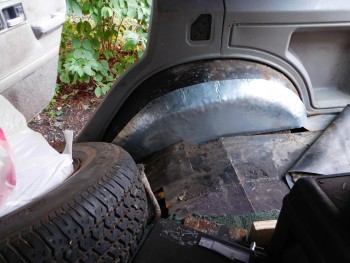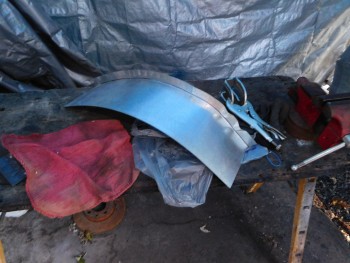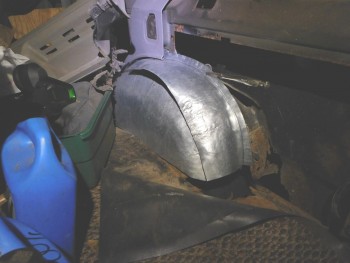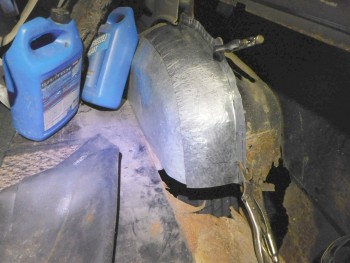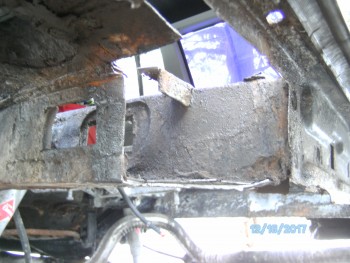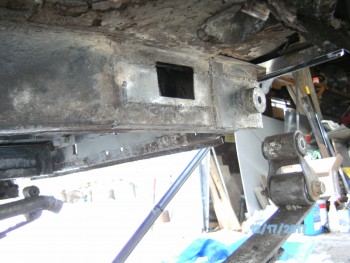The second part ;I got close to being able to use,got overworked and cracked in a few places so I had to start another one. The secondary issues when forming a patch panel are becoming apparent so It's taking longer then the first part which was more straight forward.
I made a tucking fork out of two alignment punches bought at HomeDepot. All I did to them was round off the tips ,weld them together and weld a handle to them. I did not want to spend a lot of time welding it and it shows.

I did not want to set up my big welder so I did it with a 105 amp mig with flux core. Well its working. The fork pieces flex some when using it but they have not broken yet so I guess they will be okay. If you watch the videos on how to use an English Wheel 1-4 ; which I suggest you do, he puts the info needed vary planely and easy to grasp. He does leave a fair amount out in order to guide you through the process that I will go into here.
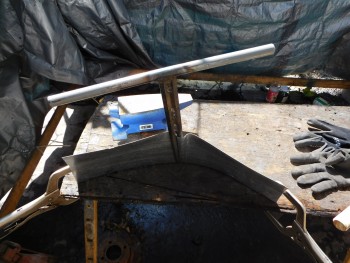
After you get good at shrinking a tuck and not just knocking it down, you have to get efficient at it and also not crease or fold over the metal onto it's self or in other words shrink it too much in one tuck. If the metal is creased or folded over you cant get it out without causing further damage from what I can tell.
I'm shrinking right now by putting in the tuck with the fork and keeping it locked by putting in my clamp style tucker just for insurance. The fork is considerably faster if you are going in deep from the edge. If the tucks get much more than 45 degrees and your locking the tuck in using any method including just hammering skill it will most likely stand the metal up too much and cause a crease or fold over. As Wray Schelin states if this comes close to happening you can always just hammer straight down to open it up some. If you are keeping the tuck locked ; one way or another, the secondary goal is to shrink the tuck and keep the metal relatively smooth and undamaged. Basically as Wray Schelin states ,you gather up the tuck and then hammer what's left down without creasing it or folding it over. I have been starting from the inside of the tuck and working to the edge of the piece. When the tuck is hammered it can't be at an angle that is straight down or it just gets spread back out without shrinking. The edge of the tuck has to be hit at an angle that forces the part under the hammer down AND forces the metal towards another part of the tuck. The tuck also needs sort of a 'escape path' or space, so it's assured it won't get creased or folded. When using a fork the first twisting motion does not cause tension, the second twist does this. After you have created a tuck that is not too steep the last part to do is make sure the metal has tension on it and is drawn together on the last side of the tuck.
